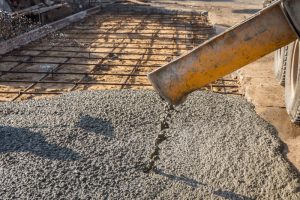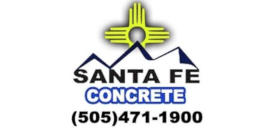Top Tips for Pouring Ready Mix Concrete Successfully in the COLD Santa Fe Winters – Part Three
- admin
- Feb-19-2020
- pouring ready mix concrete in cold weather
Concrete Curing Tips

Top Tips for Pouring Ready Mix Concrete Successfully in the COLD Santa Fe Winters – Part One by Santa Fe Concrete
Here are some suggestions that can help make sure the concrete reaches its maximum potential strength.
- When using forms, leave them in place for as long as possible. This helps protect the concrete from drying too quickly, as well as help to retain heat. Edges and corners have more surface area and are highly sensitive to heat loss. Forms will help prevent any loss of integrity in these areas.
- You can pump live steam into your enclosure around the concrete to help alleviate premature evaporation in the low-humidity environment that cold weather tends to provide.
- All bleed water needs to fully evaporate before you finish. With the slower setting and curing schedule that is required of pouring and placing concrete in cold weather, bleeding also comes along later than expected. It is likely you will be handling more bleed water than with typical concrete placement.
- During the curing process, you should check in on the concrete temperature with an infrared temperature gun. Make certain that the concrete is preserving a temperature no lower than 40 degrees Fahrenheit for the entirety of its curing period.
- Once you discontinue actively heating the enclosure, it is important that the concrete doesn’t cool off too quickly. You may gradually lower the temperature, or use insulating blankets, allowing you to dismantle the enclosure. With larger structures, it can be advised to slow the process to several days, and possibly even weeks. Immediately shocking the concrete by removing the blankets too quickly in cold weather will cause a difference in temperature between the middle and the exterior, which will cause it to crack.
- Apply sealant in order to protect the concrete from outside water seeping in. These sealants help prevent curing failure and extend the concrete’s overall life expectancy. Breathable concrete sealants are necessary in extremely cold regions, this way moisture can evaporate when it thaws after the cold season.
- Make sure to cure the concrete for the time period recommended for the type of cement being used. ACI Committee 308 recommends the following minimum curing periods:
ASTM C 150 Type I cement, 7 days
ASTM C 150 Type II cement, 10 days
ASTM C 150 Type III cement, 3 days
ASTM C 150 Type IV or V cement, 14 days
ASTM C 595, C 845, C 1157 cements, variable
Post Tagged withpouring ready mix concrete in cold weather
